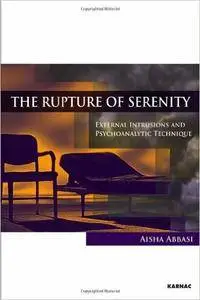Aisha Abbasi, "The Rupture of Serenity: External Intrusions and Psychoanalytic Technique"
2014 | ISBN-10: 1780491956 | 192 pages | PDF | 2 MB
2014 | ISBN-10: 1780491956 | 192 pages | PDF | 2 MB
What happens when the outside world enters the psychoanalytic space? In 'The Rupture of Serenity: External Intrusions and Psychoanalytic Technique', Aisha Abbasi draws on clinical material to describe some of the dilemmas she has encountered in her work with patients when external factors have entered the treatment frame. She considers analytic dilemmas that range from how to deal with patients' unusual requests regarding the conduct of an analytic treatment to the question of how to handle events in the analyst's personal life that, by necessity, must be addressed in the analysis. As a Muslim of Pakistani origin, Abbasi is also able to discuss, frankly and with compassion, the role that ethnic and religious differences between patient and analyst can play in treatment-differences that, in the aftermath of 9/11 and the search for and killing of Osama bin Laden, became a palpable presence in her consulting room. Abbasi also explores the deeper meanings of waiting-room interactions and how analysts can view the entrance of the 'iWorld' into the psychoanalytic space: not as an unwelcome third party, but as a tool with great potential. Abbasi shares with us her inner struggles to understand and to keep working analytically. She acknowledges that her ability to do so can be strained when external events give rise to internal destabilization within her. She believes that this type of unexpected internal destabilization within the analyst is not only human and unavoidable, but also necessary-and, frequently, therapeutic. The book is deeply rooted in existing analytic literature and will be a useful resource for clinicians at all levels of education and practice. At the same time, it is written without technical jargon, so that the clinical material that forms the backbone of each chapter will be easily accessible to nonclinicians as well-who will find it to be a moving and lively account of what goes on in a psychoanalyst's consulting room.



